 3
Issue 3
3
Issue 3
Brainstorming workshop
A one hour brainstorming session was staged with the Sustainable Urbanism New Directions’ speakers and guests from Qatar University and public and private bodies in Doha as part of the event to draw out a range of integrated propositions by participants for the research agenda for Doha, Qatar and the region.
The session was moderated by Dr. Lucy Bullivant.
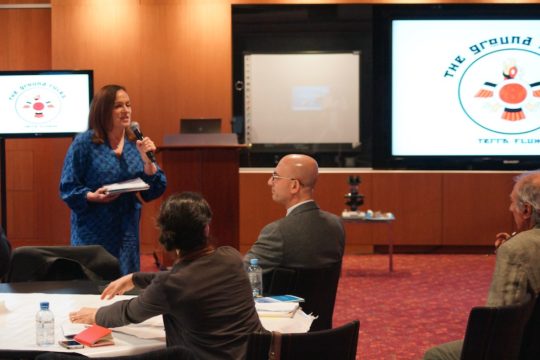
Moderator Dr. Lucy Bullivant introducing the session, Brainstorming workshop during the Sustainable Urbanism New Directions Workshop, 21 March 2016. © Qatar University.
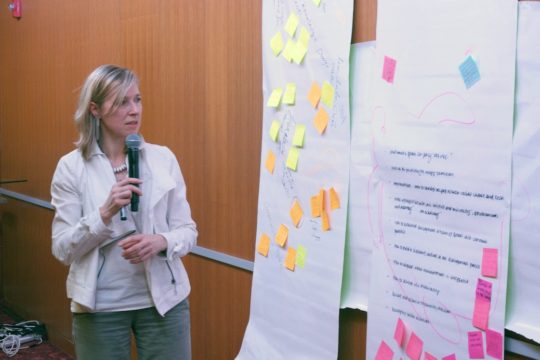
Johanna Gibbons presenting the results of her group’s discussions, Brainstorming workshop during the Sustainable Urbanism New Directions Workshop, 21 March 2016. © Qatar University.

Dr. Abdelaziz Bouras and Dr. Patrizia Lombardi, Brainstorming workshop during the Sustainable Urbanism New Directions Workshop, 21 March 2016. © Qatar University.
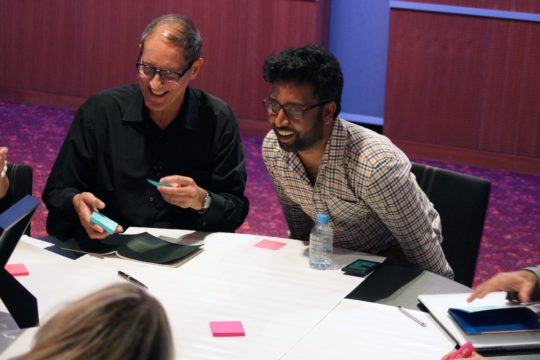
Dr. Rafael Pizarro and delegate from QEERI, Brainstorming workshop during the Sustainable Urbanism New Directions Workshop, 21 March 2016. © Qatar University.
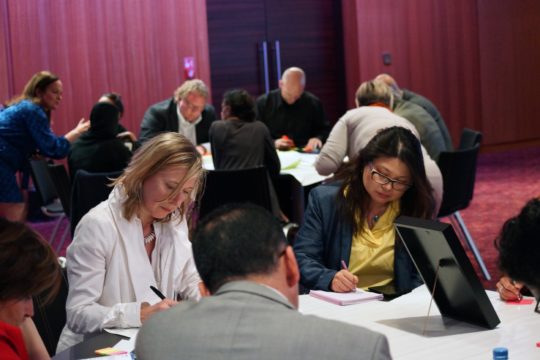
Johanna Gibbons and Sophie Hagan (MME), Brainstorming workshop during the Sustainable Urbanism New Directions Workshop, 21 March 2016. © Qatar University.
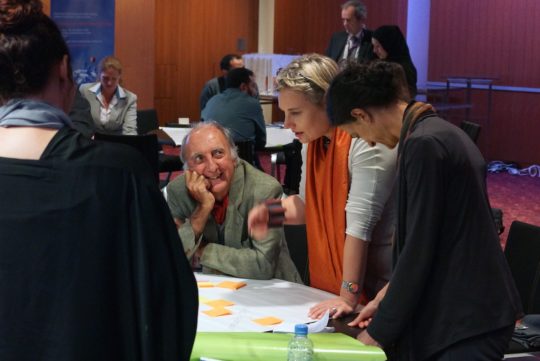
Delegates Paige Tantillo, Marcello Terzano and Katrin Scholz-Barth, Brainstorming workshop during the Sustainable Urbanism New Directions Workshop, 21 March 2016. © Qatar University.

Dr Rafael Pizarro and Dr. Abdelaziz Bouras, Brainstorming workshop during the Sustainable Urbanism New Directions Workshop, 21 March 2016. © Qatar University.

Dr. Anna Grichting, Brainstorming workshop during the Sustainable Urbanism New Directions Workshop, 21 March 2016. © Qatar University.
Group leader: Johanna Gibbons
What would a Qatari eco-legacy look like and what are the possibilities for energy transition. In implementation, how can we bridge the gap between social science and technology?
Prioritise:
Decarbonisation
Social and economic justice
Economic security
Peace and stability
Social inclusion
Human capital development
Proposals:
Create synergies between civil societies and the University, government, industry and civil society through a new academy
– Analyse potential new regimes of governance
– Restructure development in terms of Qatar’s socio-economic priorities
– Apply policy oriented sustainability, not just technology oriented sustainability
Build a recycling culture in the development process
Define social equity goals in growing smart cities
Make feasibility studies of projects in detail including their environmental impact, not just economically based
Extensively evaluate the socio-economic impact of mega projects
– Make baseline ecological assessments prior to development decisions
– Water storage and catchment: decide what to do with excess TSE, with proper draining, leading water to where it can be treated, stored or used
– Formulate set back distances for different land use based on environmental criteria and nuisances
– Analyse what kind of food can be grown in the region organically
– Improve waste management; waste to energy plant facility; create an integrated waste strategy. We can recycle sewage into potable water, but it is a social and cultural issue
– Develop soil biodiversity and road reserves as bio-diversity corridors
Explore the linking of social sciences approaches with technical approaches
– Enable roads to serve as biodiversity corridors
– Create garden patches in the city
– Focus on soil biodiversity
– Promote walking and cycling
– Set up community labs, and composting and gardening groups, waterside meetings for nature lovers
– Design new apps to promote food growing
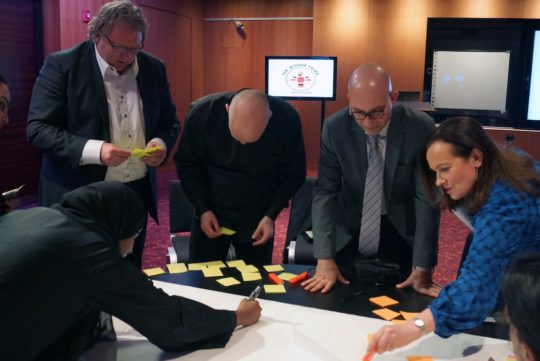
Dr. Rob Roggema (left) with his group, including moderator Dr. Lucy Bullivant, Brainstorming workshop during the Sustainable Urbanism New Directions Workshop, 21 March 2016. © Qatar University.
Group leader: Rob Roggema
Nature is the urbanist. Doha’s Biourbanism includes the Gulf, the ocean, water – and is a man-made oasis made with sweet and salt water.
Doha Urban Acupuncture, Urban Oasis, URbasis, Noasis, Dohasis, NatUrb, Naturbist, Naturbanist, Edible City
Doha’s Biourbanism to include1000+ new local knowledge design processes. Concepts include:
– Water is visible driving force, a visible force, for urbanism – blue urbanism
– More sharing of skills
– Community spirit
– Flexibility and adaptability of Doha for a unified city
– More cracks of Doha – search for the cracks in greater Doha
– Human scale & walkability
– Layers of collective subconscious
– Connection with nature – biophilia
– Flexible urban restoration
– Open up the control – let nature in
Connectedness through green urban infrastructure
The points for urban acupuncture
– Man-made Oasis: generated Biourbanism
– Biourban infrastructure
– Doha as part of nature
– Edible landscapes – function landscapes
– 1000 community design
– Connect design with people’s involvement in process throughparticipative planning
– Local knowledge = new vocal knowledge and the dissemination of knowledge
– Permeable coast: exchange of sea and land
– Public realm – open green spaces, plazas, benches
– Use local waste products
– Live manure to amend soil, stop peat moss
– Occupy the desert – fertilise the desert – green the desert – Shaded bike paths through pergolas and bougainvillas to reduce the traffic, and shaded walkways
– alternative transportation means for children first (bikes, roller blades, skateboards), then for older age community members.
– initiative to galvanize communal interest behind a sustainable urban cause
– Neighborhood no car day each month in which social events are organized in the streets
– Health – traffic reducing, cutting down pollution, social connectivity, creating public spaces
– Urban furniture as traffic calming measures
– Permanent groundcover – ending annual plantings twice a year
– Build insect hotels with communities to increase biodiversity
– Anti fragile = Agile city
Group leader: Prof. Dr. Gerhard Schmitt
A beautiful view of sustainable cities is threatened by an eventual reality of rising sea levels, so apply the following measures:
– Reduce the footprint
– Protect wetlands and marshlands
– Give greater attention to waste and sea water treatment
– Build food security
– Create a Green Belt 2 km wide
– Conceive of the urban neighbourhood with waste management, organics – food, manure, landscape waste; inorganics/recyclable
– Bioclimatic buildings – low energy consumption.
– Community building – educate and collaborate
– Soil health: composting, trees, mulching
– Bioclimatic buildings – solar panels – recycling water for plantings
– Reduce energy consumption
– Create urban forests by planting trees along roads – integrating waste water system and tree planting